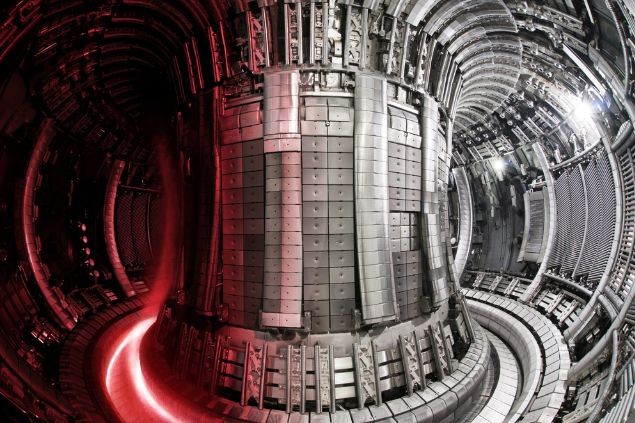News
Joint European Torus (JET) Culham to close, ending over 40-years of fusion energy heritage supported by Quartzelec

11 April 2024
40+ years’ of support draws to an end as experiments at the UKAEA’s illustrious Joint European Torus operations conclude with a final world beating record of 69 megajoules set in December 2023.
Quartzelec and its legacy operations have supported the UK Atomic Energy Authority’s Joint European Torus (JET) operations at its Culham Campus for Fusion Energy nr Abingdon in Oxfordshire since the plant was constructed and first commissioned in the early 1980s, with an eight-man team onsite to ensure the continuous operation of the flywheel generators and power supplies.
JET is one of the world’s leading fusion energy technology centres, investigating the potential of fusion energy as a safe, clean and virtually limitless energy source for future generations. However, with technological developments, and the construction of the new ITER facilities in France, much of the existing equipment, which was designed and built to the highest of specifications and received the highest level of inspection and through-life maintenance services to ensure an almost faultless performance, is being decommissioned and repurposed. Hence the contract between Quartzelec and UKAEA is coming to a logical end at the end of March 2024.
Over the years, Quartzelec has continuously provided the total operation and maintenance support for the two 409.8 MVA flywheel generators originally supplied by GEC Large Machines. These were used to power the JET plasma field and have been an integral part of many historic JET engineering achievements.
Weighing in at 775 tonnes, the generators have been monitored both locally and remotely, with the Quartzelec team actively involved in weekly visual checks as well as the regular on-going and more in-depth maintenance checks during shutdown periods between the experimental campaigns. The programme also resulted in full bearing inspections being conducted usually biannually.
Extensively relied upon by JET, Quartzelec’s areas of responsibility increased with each successive contract term, supporting other parts of the pulsed power supply including maintenance on HV transformers, 36kV and 11kV circuit breakers, earth switches, bus bar systems, amplifiers and capacitor banks as well as being an essential part of the Power Supplies Operations Team (PSOT).
“Over the decades we have maintained an excellent relationship with the UK Atomic Energy Authority helping them realise many pioneering and world class achievements.” stated Keith Evans, Quartzelec’s Operations Director. “Our journey began delivering services to the UKAEA as GEC Large Machines before our subsequent rebrand to Quartzelec in 2007 following an MBO acquisition of the legacy operation by the incumbent UK management team. From the outset we were the only UK based organisation that fully appreciated the rotating machine and static electrical equipment engineering requirements plus had the knowledge to safely and professionally maintain the equipment which we’ve continued to do throughout the operational life of the plant and equipment”.
JET has been at the forefront of the European fusion research programme for decades and over the next 15-years, around £1-billon worth of assets will be repurposed for the fusion and adjacent sectors. It will not only remain a fantastic asset for this country, but the decommissioning that is being undertaken will be a test bed for decommissioning of future commercial fusion machines and will see theCulham campus continue as a global hub for the ongoing development of commercial fusion.
“Quartzelec has been a vital partner in our research operations here for decades and they continue to deliver faultless service,” added Ian Chapman CEO of the UKAEA’s JET operations. “This has been and remains a world class facility. An important national asset, the next 15-years will see around £1-billon worth of assets repurposed, in a planned, cost-effective and fully sustainable way, to the benefit of the commercial fusion and adjacent sectors. Once again we’d like to thank Quartzelec and its team here for their contribution to our ongoing success.”
Initial construction of the JET facilities at the Culham Campus started in 1978 and the first plasma operations commenced in 1983. This in turn lead to the first experiments in Tritium in 1991. By 1997 high performance full deuterium-tritium experiments were being undertaken and JET achieved a world record fusion power of 16.1 MW. In 2009-10, JET installed a new beryllium/tungsten plasma facing wall to test this configuration for ITER. A decade later preparations were well advanced for new ‑deuterium tritium fuel mix experiments, designed to sustain high fusion performance for commercial fusion power for longer periods. These achievements have assisted the design and construction of ITER, its international successor, which is being built in France and will continue fusion research.
#UnparalleledInEngineeringServices
Follow us on Facebook, X & LinkedIn
Mill Road West
Rugby
CV21 1BZ
UK



















